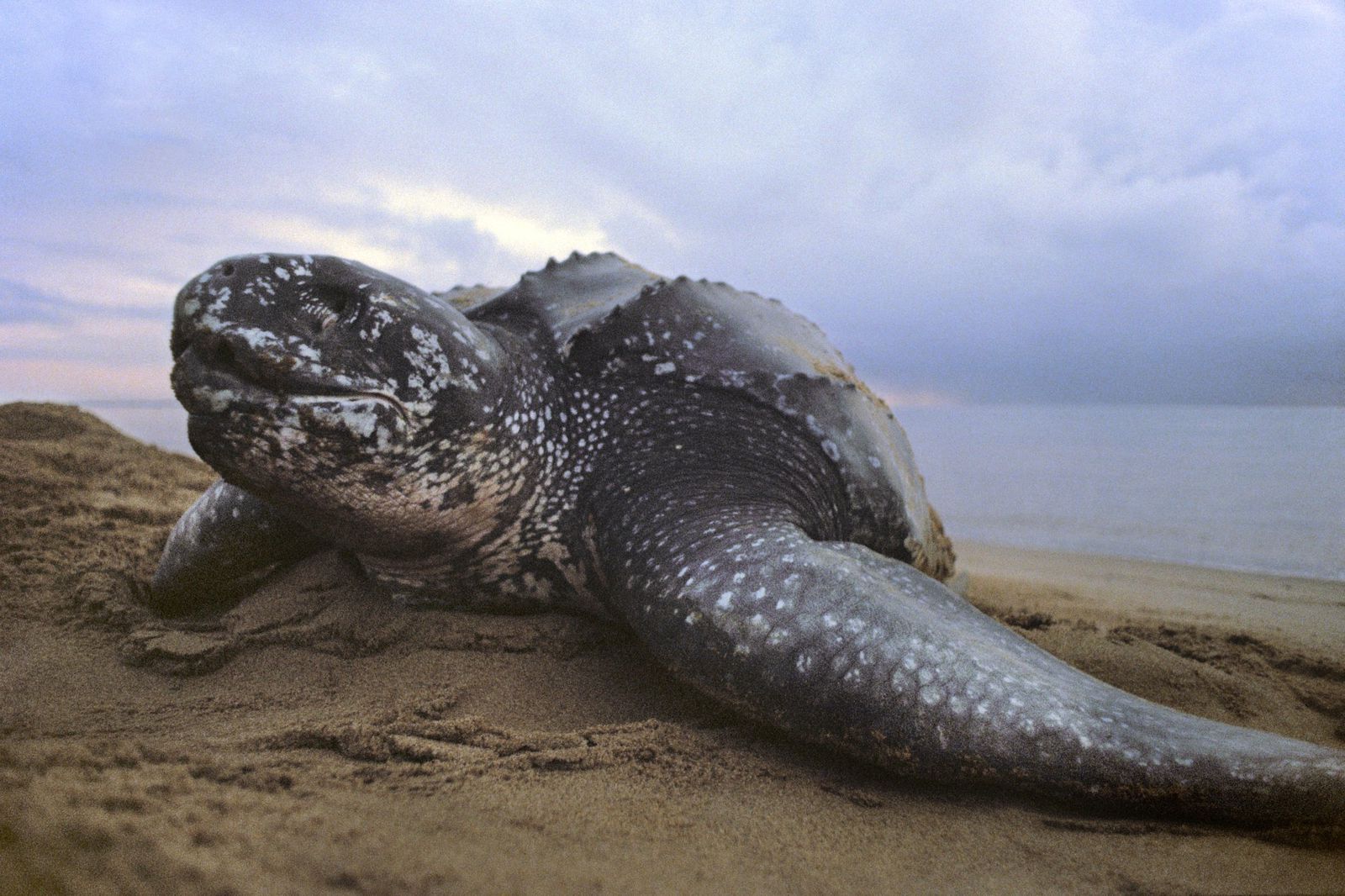
Ever wondered what makes sea turtles such fascinating creatures? These ancient mariners have roamed the oceans for over 100 million years, and their unique adaptations are nothing short of amazing. One of the most intriguing features of sea turtles is their mouths. Unlike many animals, sea turtles don't have teeth. Instead, they possess specialized beaks and jaw structures that help them consume a variety of foods, from jellyfish to seagrass. But why are their mouths so special? Understanding the anatomy and function of a sea turtle's mouth can provide insight into their diet, behavior, and survival strategies. Get ready to dive into 35 incredible facts about sea turtle mouths that will leave you in awe of these remarkable reptiles.
Key Takeaways:
- Sea turtles have unique beak-like structures instead of teeth, adapted to their specific diets. Their mouths help them grasp, tear, and swallow food, showcasing their incredible feeding adaptations.
- Understanding sea turtle mouth anatomy is crucial for their conservation. Threats like plastic pollution and fishing nets endanger these remarkable creatures, highlighting the importance of protecting their marine habitats.
Sea Turtle Mouth Anatomy
Sea turtles have fascinating mouth structures that are uniquely adapted to their diets and lifestyles. Let's dive into some intriguing facts about these remarkable creatures.
-
Sea turtles don't have teeth. Instead, they possess beak-like structures that help them grasp and tear their food.
-
The beak shape varies among species. For instance, green sea turtles have serrated beaks to help them eat seagrass, while loggerheads have powerful jaws to crush hard-shelled prey.
-
Inside their mouths, sea turtles have papillae. These are spine-like structures that line the throat and help prevent prey from escaping.
-
Papillae also aid in swallowing. They point backward, ensuring that food moves in one direction—down the throat.
-
Leatherback sea turtles have the most pronounced papillae. This adaptation helps them consume jellyfish, their primary diet.
Feeding Habits and Diet
Sea turtles' mouths are perfectly adapted to their specific diets, which vary widely among species. Here are some facts about their feeding habits.
-
Green sea turtles are primarily herbivores. They feed on seagrasses and algae, which their serrated beaks help to tear.
-
Loggerhead turtles are carnivorous. Their strong jaws allow them to crush crabs, mollusks, and other hard-shelled animals.
-
Hawksbill turtles have narrow, pointed beaks. This adaptation helps them extract sponges and other invertebrates from crevices in coral reefs.
-
Leatherback turtles primarily eat jellyfish. Their delicate, scissor-like jaws are perfect for slicing through the soft bodies of jellyfish.
-
Olive ridley turtles have a varied diet. They consume jellyfish, shrimp, crabs, and even algae, showcasing their adaptability.
Unique Adaptations
Sea turtles have evolved several unique adaptations in their mouths to help them survive in their marine environments.
-
Sea turtles can’t retract their heads into their shells. This makes their beak and mouth adaptations even more crucial for protection and feeding.
-
The beak of a sea turtle is made of keratin. This is the same material that human fingernails and hair are made of.
-
Sea turtles have a specialized gland near their eyes. This gland helps excrete excess salt from their bodies, which they ingest while feeding.
-
The shape and strength of a sea turtle's beak can indicate its age and diet. Older turtles often have more worn beaks due to years of feeding.
-
Sea turtles' mouths are designed to handle a variety of prey. This versatility is key to their survival in diverse marine environments.
Threats and Conservation
Understanding the anatomy and feeding habits of sea turtles is crucial for their conservation. Here are some facts about the threats they face and efforts to protect them.
-
Plastic pollution poses a significant threat. Sea turtles often mistake plastic bags for jellyfish, leading to ingestion and potential death.
-
Fishing nets are another danger. Sea turtles can become entangled, which can cause injury or drowning.
-
Coastal development impacts their feeding grounds. Destruction of seagrass beds and coral reefs reduces available food sources.
-
Climate change affects sea turtle diets. Warmer ocean temperatures can alter the distribution of their prey, making it harder for them to find food.
-
Conservation efforts include protecting nesting sites. Ensuring that hatchlings can reach the ocean safely is crucial for maintaining sea turtle populations.
Interesting Behaviors
Sea turtles exhibit some fascinating behaviors related to their feeding and mouth anatomy. Here are a few intriguing facts.
-
Sea turtles can hold their breath for several hours. This ability allows them to dive deep in search of food.
-
They use their flippers to help capture prey. Flippers can pin down jellyfish or scoop up seagrass.
-
Sea turtles often travel long distances to find food. Some species migrate thousands of miles between feeding and nesting grounds.
-
They have a strong sense of smell. This helps them locate food even in murky waters.
-
Sea turtles sometimes eat sand and small stones. This behavior, known as geophagy, helps with digestion by grinding up food in their stomachs.
Fun Facts
Let's wrap up with some fun and lesser-known facts about sea turtle mouths and feeding habits.
-
Baby sea turtles, or hatchlings, have a special tooth called a "caruncle." This helps them break out of their eggshells.
-
Sea turtles can eat up to 440 pounds of jellyfish a day. This makes them important for controlling jellyfish populations.
-
Some sea turtles have been observed eating fish. This behavior is more common in younger turtles still exploring their dietary preferences.
-
Sea turtles play a crucial role in marine ecosystems. By grazing on seagrass and algae, they help maintain healthy ocean habitats.
-
The oldest known sea turtle fossil is about 120 million years old. This shows that their unique mouth adaptations have been successful for a very long time.
-
Sea turtles can live up to 50 years or more. Their long lifespan gives them plenty of time to perfect their feeding techniques.
-
They have a slow metabolism. This allows them to go without food for extended periods, especially during migration.
-
Sea turtles are solitary feeders. They usually hunt alone, relying on their specialized mouths to capture and consume prey.
-
Some species can change their diet as they age. For example, green sea turtles start as omnivores but become herbivores as adults.
-
Sea turtles have been known to eat invasive species. By consuming non-native jellyfish and algae, they help protect marine biodiversity.
Fascinating World of Sea Turtles
Sea turtles have some of the most unique mouths in the animal kingdom. Their beak-like structures help them tear through tough seaweed and jellyfish. Unlike many other creatures, they don't have teeth. Instead, their mouths are lined with sharp, spiny structures called papillae, which help them grip slippery prey. These adaptations are crucial for their survival in the ocean.
Understanding these features gives us a deeper appreciation for these ancient mariners. Their specialized mouths are just one of the many incredible adaptations that have allowed them to thrive for millions of years. Protecting sea turtles and their habitats ensures these fascinating creatures continue to grace our oceans.
Next time you see a sea turtle, remember the incredible journey it has made and the unique adaptations that help it survive. Sea turtles truly are marvels of the marine world.
Frequently Asked Questions
Was this page helpful?
Our commitment to delivering trustworthy and engaging content is at the heart of what we do. Each fact on our site is contributed by real users like you, bringing a wealth of diverse insights and information. To ensure the highest standards of accuracy and reliability, our dedicated editors meticulously review each submission. This process guarantees that the facts we share are not only fascinating but also credible. Trust in our commitment to quality and authenticity as you explore and learn with us.


